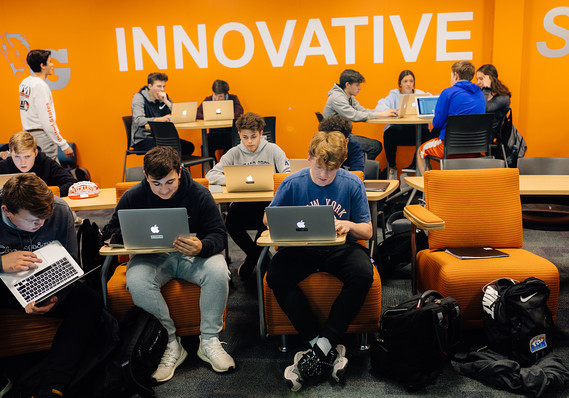 Lucy Hewett
Lucy Hewett
This is the fourth in a six-part series of stories about programs that offer high-school students the opportunity to take college classes.
The series was produced with support from the Education Writers Association Reporting Fellowship program. (Read parts one, two and three here).
Marilyn Garcia has been going to college since she was 14 years old.
The now 23-year-old took her first course on a community-college campus when she was a freshman in high school. By the middle of her senior year, she had completed her associate’s degree and started taking classes at her local four-year university, the University of Texas El Paso.
Marilyn Garcia’s story points to some of the challenges of blurring the line between high school and college.
When she entered UTEP as a full-time college student, at age 18, Garcia brought so may credits with her that she was able to get her bachelor’s degree in just two more years. She graduated at age 20.
In some ways Garcia’s impressive story represents the ideal outcome of an early college high school, a program that allows students to pursue their high-school diploma and associate’s degree at the same time. But Garcia’s story also points to some of the challenges that can come from blurring the line between high school and college.
One of the consequences of the explosive growth in opportunities for high-school students to take college courses over the past several years is that teens as young as 14 are expected to both learn like college students and even think like them about their futures, accelerating the time they spend preparing for a specific job or degree. At the same time, policy makers, educators and others are increasingly considering courses that look and feel like high school — teens are the only students and they’re taught by high school teachers — on par with college.
For students, that truncated experience can have both benefits and drawbacks.
 Courtesy of Marilyn Garcia
Courtesy of Marilyn Garcia
As Garcia describes it, the first two years she took college courses — in the ninth and 10th grades — she “wasn’t mature enough” to take them seriously, though she ultimately buckled down as a junior and senior.
By the time Garcia started as a full-time college student, at the age of 18, she quickly realized the amount of time she had before entering the real world — two years — wouldn’t be enough to prepare her for that daunting task. Garcia, who had aspirations of completing a Ph.D in sociology, didn’t learn how important research courses would be to pursuing that path until a year and a half into her college career.
On the advice of a professor, Garcia decided to stay at UTEP for an extra two years to get her master’s degree — ultimately spending four years at the school like a typical college student. She focused her thesis on how age-related stigma affected the plans and academic performance of other early college high school graduates.
Now Garcia is in a sociology Ph.D program at the University of California-Irvine. “My age was a big influence,” Garcia said of her decision to stay at UTEP for her master’s. “I would have been going into a Ph.D program at 20. That was kind of intimidating for me.”
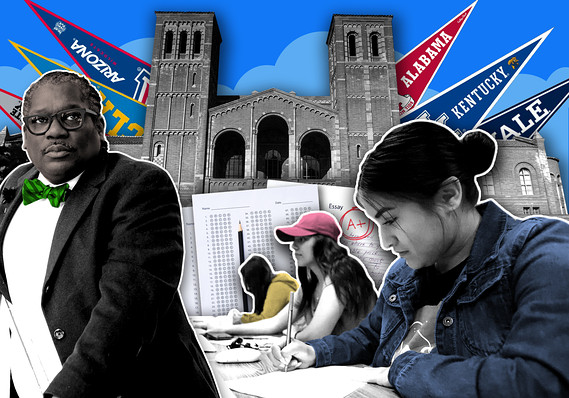 MarketWatch photo illustration
MarketWatch photo illustration
‘The middle space does not exist’
Politicians, parents and others have practical reasons for encouraging their high-school students to take college courses — they have the potential to save students time and money, for one.
By occupying a middle space between the two systems, high-school students should also be better prepared to attend college full-time, said Julia Duncheon, an assistant professor at UTEP, who studies dual credit, dual enrollment, and early colleges. That, at least, is the educational philosophy behind duel enrollment.
But, “the middle space does not exist,” Duncehon said, a sentiment that’s based on her research. Either high-school students sit in a college classroom with a college professor, or they take a course with a college syllabus taught in a high school by a high-school teacher.
When high schools and colleges partner to offer these courses, they need to think more critically about what the courses should look like and ways in which they can effectively support teachers charged with teaching these courses, Duncheon said.
“To what extent should we be addressing developmental needs?” she said, “and to what extent should we be enforcing college norms?”
But for many proponents of this dual-credit system, graying the line between high school and college is exactly the point.
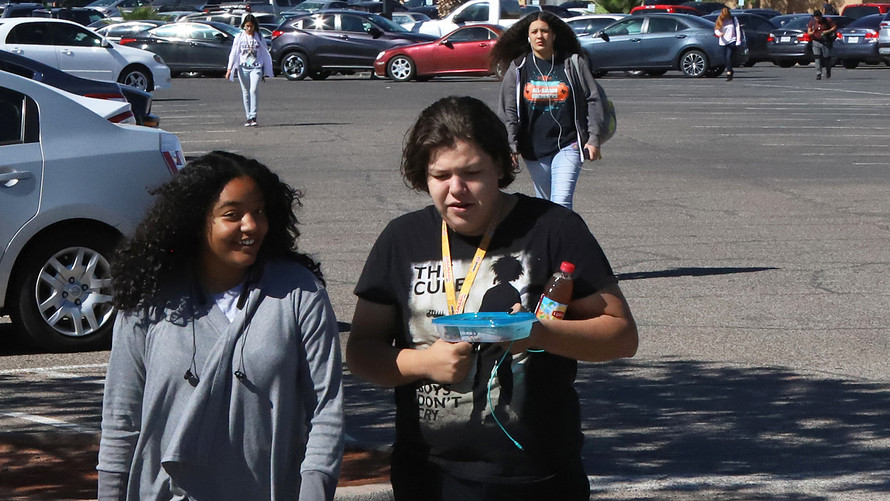 Rudy Gutierrez
Rudy Gutierrez
High-school graduation isn’t a destination
In Chicago, now former mayor Rahm Emanuel pushed the city’s K-12 public-school system and its community-college system to work more closely together to offer more college-level courses to the city’s high-school students. The effort is part of a broader strategy to move students towards “a minimum of 14th grade,” Emanuel said in a phone interview late last year.
The goal “was to make sure that all of our students were better prepared for the economy of tomorrow,” he said. “I’ve always wanted high-school graduation to be a milestone not a destination.”
About 25 miles northwest of Chicago, officials at District 214, which oversees six suburban high schools, were also motivated by the economic reality to do more to prepare students for life after high-school graduation. Their strategy includes an expansion of dual-credit and dual-enrollment offerings.
Expanding access to college courses for high-school students can offer a major boost to students who have traditionally struggled to get to and through college.
“We changed our focus several years ago as a district, from how are kids doing at the end of junior year on the big tests to what’s happening to our kids six years after they graduate,” said Jeff Wardle, the principal of Buffalo Grove High School in Buffalo Grove, Ill.
One of the key outcomes the district is evaluating, according to Wardle: “Are they getting jobs that can pay for them to live back in our local area?”
In addition to better preparing students for the real world, expanding access to college courses for high-school students can offer a major boost to students who have traditionally struggled to get to and through college, said Melissa Connelly, the chief program officer at One Goal, an organization that collaborates with high schools in low-income communities to help students pursue post-secondary degrees and credentials.
Arguably, these students need the biggest buffer against the cost of switching their major or dropping a course, Connelly said. Earning some college credit before they head to campus as a full-time student can help them avoid costly changes to their plans and, ultimately, persist in school.
High-school students in wealthy districts or those who can afford to go to private school have always had access to what Connelly describes as “a more porous high-school and college experience,” through AP courses, dual enrollment and attentive counseling that pushes them to think early on about their plans for college and beyond.
Offering those opportunities to a wider swath of students is a relatively new development. “If a student is ready for college-level work, they should be doing college-level work — it’s that simple,” said Juan Salgado, the chancellor of City Colleges of Chicago, the city’s community college system.
Is it reasonable to expect a 15 or 16-year-old to learn like a college student?
Despite all of these benefits, whether a 15 or 16-year-old can be expected to learn like a college student is a valid question and one that high schools and colleges are actively working through.
At Michele Clark Academic Prep Magnet High School in Chicago, students taking courses over the summer at the local community college as part of the school’s dual enrollment program were accompanied by a teacher specifically hired to ride the bus, sit in on the students’ classes and tutor them.
The school came up with that idea after officials learned that some students struggled to adjust and a couple even failed their courses. “We were like ‘oh yeah they’re going, see y’all make me proud’ and they weren’t going,” said Charles Anderson, the school’s principal.
From that experience, the school learned they needed to better communicate with and support students who as teenagers may not fully understand what it means to be in college. For example, Anderson said, some students didn’t realize the difference between skipping a 50-minute course in high school and a 50-minute course in college. “In college, it’s like missing the whole week,” Anderson said.
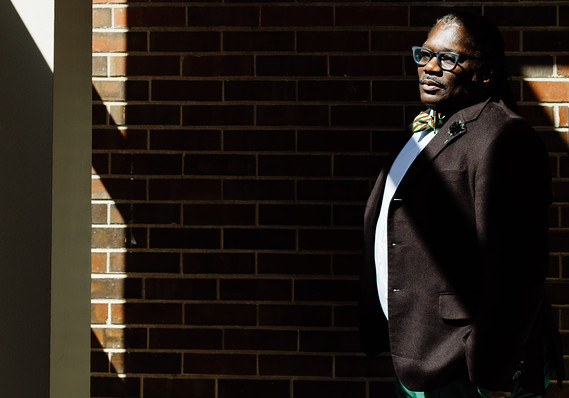 Lucy Hewett
Lucy Hewett
The school developed more robust policies to monitor attendance, including requiring students to check out when they leave the high school and check in via email or Google GOOG, -0.64% classroom when they arrive at the college campus.
By the time the students are seniors, Anderson said the school works to wean them off the hand holding — which is remarkably different from what they’ll experience in college — and “we keep trying to push them out of the nest.” That may mean checking in on their college grades, but not necessarily on attendance.
In order for students to get the most out of taking college courses in high school, experts agree that they should have a certain level of maturity. That includes having some sense of their college and even post-college plans, so they can choose courses that line up with those plans.
At Buffalo Grove High School, students choose a pathway, like health or criminal justice, as early as ninth grade. The pathways, which are part of an effort the district describes as “diploma plus,” all end in a dual-credit course and an internship.
At Buffalo Grove High School, students choose a pathway, like health or criminal justice, as early as ninth grade.
A couple of weeks before Thanksgiving, students wearing gear from the University of Minnesota, University of Michigan, University of Alabama and other colleges sat in groups on couches or at high-top tables working on a project for one of these dual-credit courses, principles of financial accounting.
The class, taught by a high school teacher, but managed by a local, private four-year university, National Louis, meets three days per week in a classroom emblazoned with the Buffalo Grove’s colors of orange and blue. But the teacher, Tom Mroz, who in addition to his high-school teaching credentials has an MBA and 18 credit hours of accounting graduate course work, tries to give it a college feel. Two days a week students can essentially use the class time as a free period. Homework is due every Sunday night.
On that November Monday, students were working together to evaluate client cases based on concepts they’d learned earlier in the course. Many said they ended up in the class because of an interest in accounting or business — a vocation practiced by their parents or a close relative.
“I want to study accounting and finance and that’s typically five years,” Zack Green, a senior said in between conferring with his group on the project. “Any time I can get off to reduce that would help me a ton.”
‘In high school, I feel like they baby you’
Martin Lopez, a high school senior in Chicago, also zeroed in early on his career goals — he hopes to one day run a business selling clothes for plus-sized men or perhaps work at the intersection of business and law — and developed a plan to get there as fast as possible, he said in an interview last fall. Last year, he enrolled in a sequence of business courses at one of Chicago’s community colleges as part of the city’s Jumpstart to Jobs program, which allows high-school students to earn a basic certificate for free at City Colleges in one of nine career fields.
“Since I was little I’ve always wanted to be ahead of the game,” said Lopez, who has been taking extra courses online since his freshman year to move through high school faster.
Lopez, who watched his siblings struggle with student debt following college, said he feels lucky to have the opportunity to knock out some college courses for free. Still, he recognizes that what’s expected of him is different than that of a typical high-school student.
“In high school I feel like they baby you,” but in his college business course, where the students and teachers bantered back and forth about how their lessons on overtime laws would translate into their paychecks from Banana Republic GPS, +0.94% there’s no hand holding, Lopez said.
At some schools, officials are acutely aware of the challenges rushing through high school and college can pose to students. Garcia’s college graduation at 20 was made possible through an innovative partnership in El Paso, which provides a scholarship for high school students who complete their associate’s degree at the end of their junior year or middle of their senior year to take courses at the local four-year university, the University of Texas, El Paso.
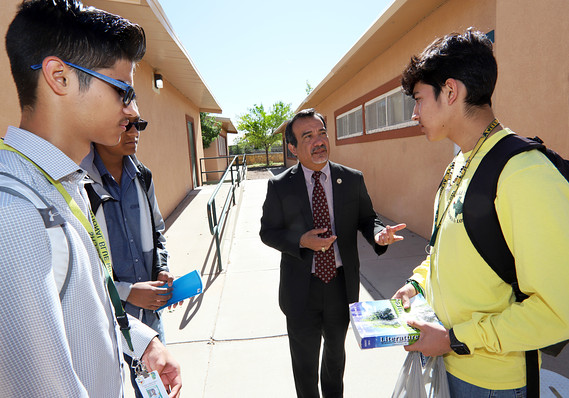 Rudy Gutierrez
Rudy Gutierrez
In some cases, that could cut down the time they spend as a full-time college student to less than two years. That worries Paul Covey, the principal at Valle Verde Early College High School.
“There’s a whole social emotional growth aspect that I have a problem with,” Covey said. “I don’t think that college is completely expendable.”
And some of Covey’s students are already questioning what it might mean to leave college so young. This fall, Emily Early, a senior, said that she planned to attend a university where the bulk of her credits would transfer, graduating from college at age 20 and becoming a teacher.
She’d love to teach creative writing, but she wonders whether that’s realistic given that the course is typically offered to older high school students. “That’s teaching 17- and 18-year-olds as a 21-year-old,” she said. “That’s a scary thing.”










Add Comment